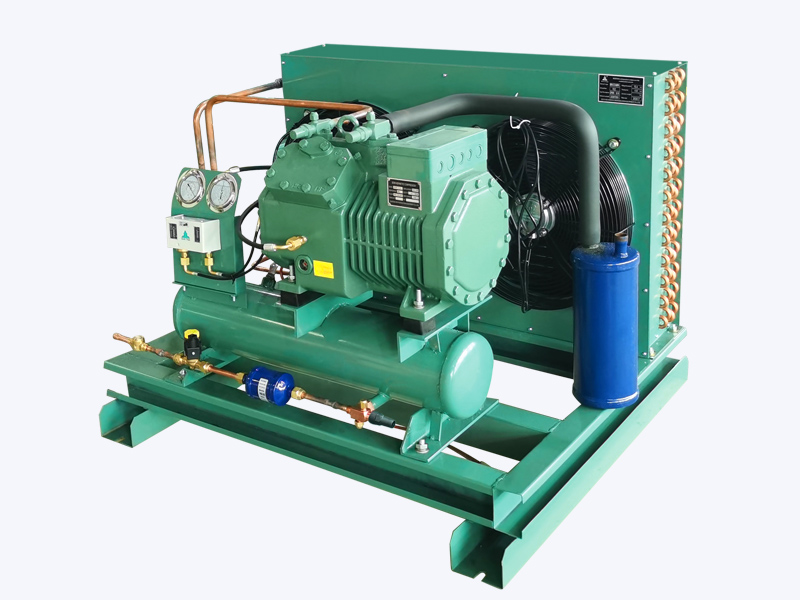Addressing common problems like overheating or insufficient cooling capacity with a semi-hermetic compressor typically involves a systematic approach to troubleshooting and implementing corrective measures. Here's a general guide:
Check Refrigerant Levels: Begin by shutting down the system safely and allowing it to stabilize. Attach refrigerant gauges to the suction and discharge ports of the compressor. Record the pressure readings and compare them to the manufacturer's specifications provided in the system's documentation. Low refrigerant levels indicate potential leaks or improper charging. Utilize leak detection tools such as electronic detectors, ultraviolet dye, or nitrogen pressure testing to pinpoint leaks. Once identified, repair the leaks using appropriate techniques and materials.
Inspect Airflow: Conduct a thorough visual inspection of the compressor's surroundings, focusing on the air intake and discharge areas. Remove any obstructions such as debris, vegetation, or equipment that may impede airflow. Check the condition of the air filters and clean or replace them if necessary. Ensure that the compressor is positioned correctly to allow for adequate ventilation and airflow. Consider installing additional ventilation or ducting if airflow issues persist.
Clean Condenser Coils: Begin by disconnecting power to the system and allowing it to cool down. Access the condenser coils according to the manufacturer's instructions, which may involve removing access panels or protective grilles. Use a soft brush, compressed air, or a commercial coil cleaning solution to remove dirt, debris, and grease from the coils. Work carefully to avoid damaging the delicate fins. Rinse the coils thoroughly with clean water and allow them to dry completely before reassembling the unit. Regularly scheduled maintenance should include coil cleaning to prevent buildup and maintain optimal heat transfer efficiency.
Inspect Condenser Fan: Start by inspecting the condenser fan blades for signs of damage, wear, or imbalance. Replace any damaged or worn blades as necessary to ensure smooth operation. Check the fan motor bearings for proper lubrication and replace them if they show signs of wear or noise. Verify that the fan motor is receiving the correct voltage and current, and that it operates smoothly without excessive vibration or noise. Consider installing fan guards or vibration isolators to improve fan performance and prolong motor life.
Check Evaporator Coils: Begin by turning off power to the system and allowing it to defrost if necessary. Access the evaporator coils according to the manufacturer's instructions, which may involve removing access panels or insulation. Inspect the coils for signs of dirt, dust, or ice buildup, which can reduce heat transfer efficiency. Clean the coils using a soft brush, compressed air, or a commercial coil cleaning solution, taking care not to damage the fins. Thoroughly rinse the coils with clean water and allow them to dry completely before reassembling the unit. Consider installing coil coatings or treatments to prevent future buildup and improve efficiency.
Monitor Refrigerant Pressure: Start by attaching pressure gauges to the suction and discharge ports of the compressor. Record the pressure readings and compare them to the manufacturer's specifications provided in the system's documentation. Low suction pressure may indicate refrigerant undercharge, while high discharge pressure may indicate overcharge or other issues. Use a refrigerant charging scale and manifold gauge set to adjust the refrigerant charge to the recommended level. Monitor system pressures during operation to ensure stability and efficiency. Consider installing pressure safety switches or controls to protect the compressor from damage due to low or high pressure conditions.
Semi-Hermetic Compressor Air-Cooled Condensing Unit(3HP-25HP)

Semi-Hermetic Compressor Air-Cooled Condensing Unit(3HP-25HP)


 English
English عربى
عربى 简体中文
简体中文









.jpg?imageView2/2/w/300/h/300/format/webp/q/75)


